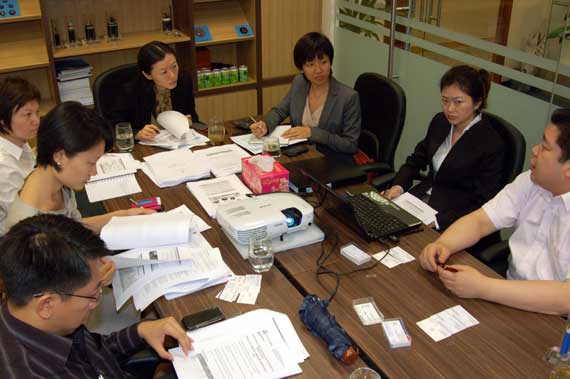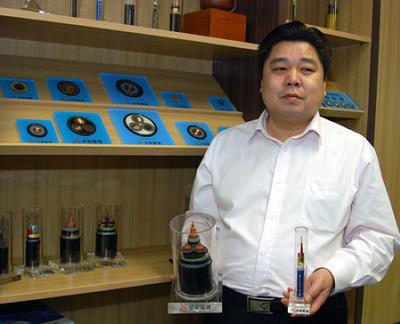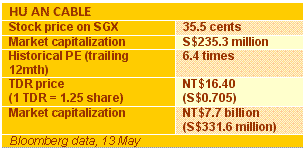
HU AN CABLE is one of China’s top 10 wire and cable manufacturers and a qualified supplier to state-owned power companies such as the State Grid Corporation of China, China Southern Power Grid, China Huadian Corporation, China Petroleum & Chemical Corporation and China National Petroleum Corporation.
Demand is booming because of China’s rapid urbanization and its national mandate for 60% (from 40% currently) of public power cables to be underground by 2020, said its CEO Dai Zhixiang during its 1Q2011 results briefing on Thu.
To put the extent of growth into perspective, consider this: China’s government is investing Rmb 2 trillion a year to migrate some 400 million villagers into urban households in the coming 20 years.
Notably, China’s 12th 5-year plan includes a RMB 500 billion budget to develop ultra-high voltage power for its State Grid, with total capital expenditure budget for power transmission up 67.7% compared to the 11th 5-year plan.

Hu An Cable’s group revenues grew by 71.2% year-on-year to RMB 607.9 million for 1Q2011 on the back of higher selling prices and steady demand for high value-added cable products and copper/aluminum rods from power infrastructure upgrading and construction projects.
During 1Q2011, it set up six new sales offices in the Gansu, Liaoning, Shanxi, Henan, Hebei and Guangdong provinces, boosting contribution from the downstream power transmission and generation sector. This sector accounted for 52.6% of cable and wire revenues.
Group gross profit margins declined by 3.7 percentage points to 13.6% due to a margin-squeeze on copper rods sold. Copper prices had risen by 20.6% year-on-year to RMB 71,192 per ton in 1Q2011.
Net profit attributable to shareholders increased by 68.9% to RMB 32.6 million.
To address the volatility risk in prices of raw materials, Mr Dai wants to increase output for mid-to-high end power cables as these are priced to reflect the higher value-added, and are therefore less vulnerable to volatility in prices of raw materials.

In April, Hu An Cable set up its first foreign subsidiary (Shenhuan Wire and Cable in Taiwan) to trade in scrapped copper, aluminium, plastics, wires and cables, as well as source for raw materials.
It has also proposed a 3-for-10 bonus issue.
Below is a summary of questions raised at the investor briefing and the management’s replies.
Q: Revenue contribution from copper rods increased from 17.8% during 1Q2010 to 23.5% in 1Q2011. Why are you expanding turnover in copper rods when its segment margins have been eroding since last year?
Manufacturing of copper rods requires less capital investment. As copper is a key product in the sector, we decided to produce copper products 2 to 3 years back. We are still improving our operations in this. The hike in copper prices caught us by surprise.
Q: Since copper rods are commodities, how can they be more lucrative than your value-added cable and wire business? Or do you simply want to earn trading profits from copper and not only manufacturing?
No, we intend to manufacture products using copper rods as feedstock. Many of such products have high value-add and good margins.
Q: Do you hedge? Why?
We do not hedge because our scale of operations is not large enough for hedging. Q: Why was there a delay in construction progress for your 5 new production lines?
Q: Why was there a delay in construction progress for your 5 new production lines?
A power shortage in China resulted in a shortage in cement supply, which halted the construction of part of the factory building.
Secondly, our facility under construction will be Yixing’s largest factory with a gross floor area of 80,000 sq m. Since it is such a high profile project, we extended the time spent on safety inspections, and decided to follow international standards for building safety.
We are using world-class equipment imported from the US, Germany, France and Finland. The equipment has already arrived and we expect the new facility to commence operations by the third quarter of this year.
Related story: HU AN CABLE: Why It's One Of Only 3 Stocks SEAVI Invested In This Year








Comments